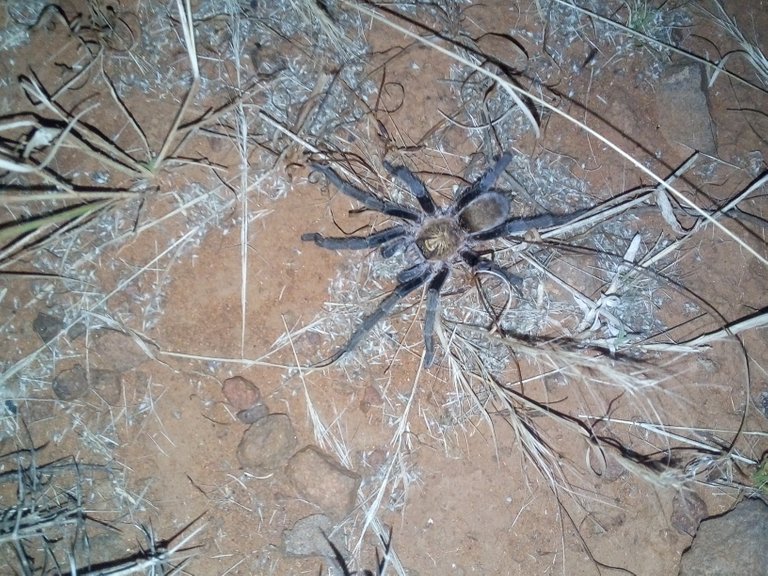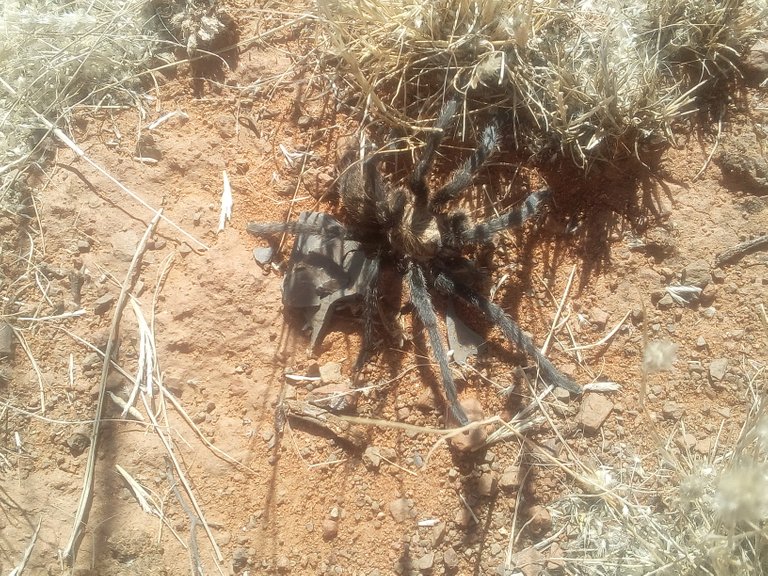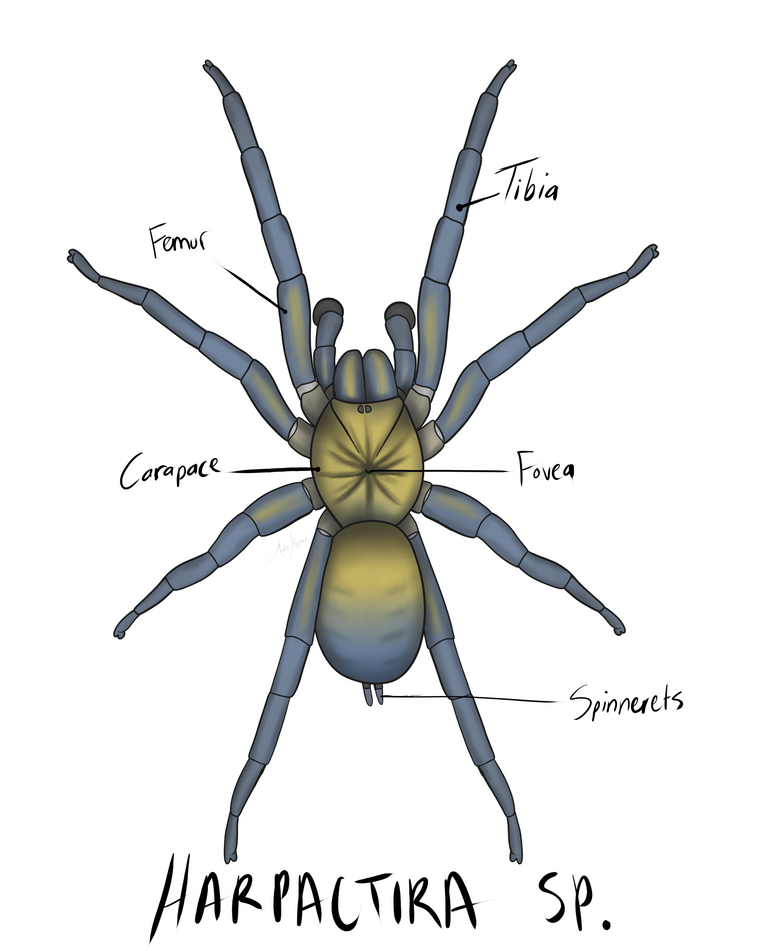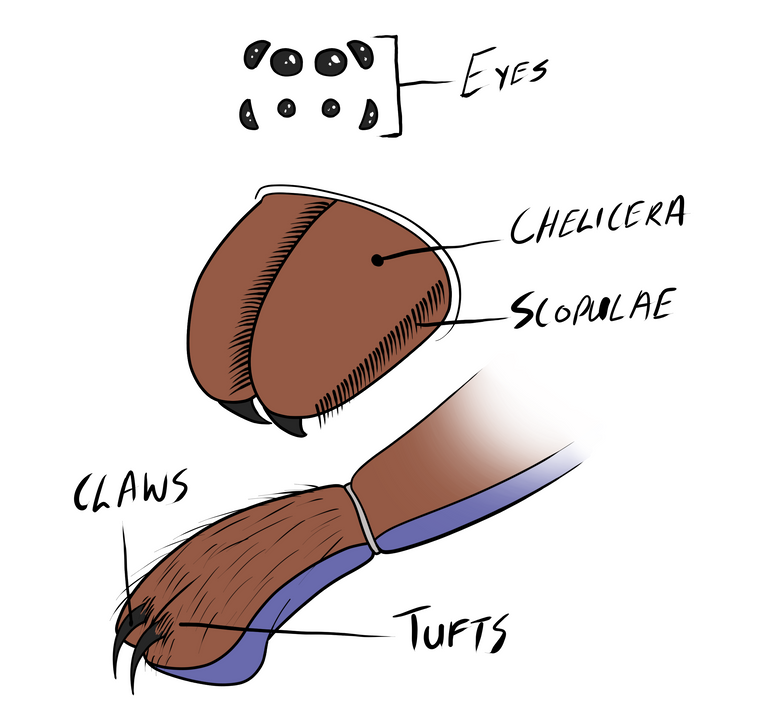Harpactira sp. [Undescribed Baboon Spider]
Good day, Hivers!
Something new from me this time. I mentioned a while back my love for spiders in particular and arachnids in general. That I wanted to make some posts of the local species we have here in Orania, South Africa.
My little out-of-the-way town is firmly in the Nama-Karoo biome, which is a semi-desert shrubland and succulent environment. Very hot, used to be dry but now it's wet and humid with all this insane amount of rain (!!!), and very windy because the area is flat.
You wouldn't think there'd be much life out here, right? I mean, the plants struggle so how much more the animals. That's what I thought when we first moved here many years ago. But this place is teeming with wildlife, and especially spiders! There is a huge biodiversity of spider species in my town alone, never mind the outlying area where there isn't human activity to bother them.
And the best of all is that there are certain spiders that can only be found in the Nama-Karoo. One in particular I'm dying to find and document but is very elusive is the six-eyed sand spider. I'll be sure to make a post about that when I do find one.
I've been spider-searching passively (not really actively because work and life and heat) for a couple of years now and, so far, I've found and documented 103 different species of spider. This breaks down further into 69 genera, and even further into 30 families! See what I mean by huge biodiversity? And I'm going to try share them all on Hive. There will be many posts.
• HARPACTIRA SP. •

But enough about that, let's get to my first spider post proper. I decided to kick this series off with the largest spider I've found here. A baboon spider (which is similar to a tarantula except it doesn't have urticating hairs that it can flick when it feels threatened).
What makes this fine specimen even more interesting is that it's an undescribed species, meaning it hasn't been "discovered" yet or documented and placed into the Tree of Life. As such, this species doesn't have a name, and that's why I refer to him by his genus name, Harpactira. (more about genus and species here)
This was a mature male baboon spider I came across in my yard. Poor thing was taking cover under some plastic that covered building supplies. What a find he was!
• GENUS •

Now why would I place him into the genus Harpactira if he's an undescribed species? How do I know? To be honest, I don't know for certain that his species belongs in that genus and I'm just taking an educated guess. It's very likely he's in the Harpactira genus, but without having a professional arachnologist examine him properly under a microscope, I can't be 100% about it.
And to make it more difficult, baboon spiders (all of them in South Africa) are a protected species, meaning that it is illegal for anyone to capture, keep, transport, breed, injure or kill, or sell or trade them without express permission to do so. So all I could do was take photos and write down how he looked.
However, he did display some physical characteristics that made Harpactira the likely genus. For one, he had mating hooks on his tibia. These hooks aren't found in all baboon spider or tarantula species. The other characteristic is the starburst-like pattern on his carapace. He lacks a horn in his fovea so that ruled out another genus found in South Africa.
There aren't many genera of baboon spiders in South Africa and each of them are pretty distinct. Most are dwarf or lesser baboon spiders, which this male was not. He also didn't share characteristics of the other genera. And so, through process of elimination, this left me with Harpactira.
• DESCRIPTION •

Taxon:
- Class: Arachnida
- Order: Araneae
- Infra-Order: Mygalomorph (primitive spiders)
- Family: Theraphosidae
- Genus: Likely Harpactira
- Species: Undescribed
Female
Female characteristics unknown.
Male
Mature male, approximately 40mm body length, and around 60mm in leg span diagonally.
Cephalothorax:
Yellow and dark brown starburst pattern on carapace. Black round bulbs on tarsus of pedipalps. Stroke of shimmering yellowish setae down front of chelicera. Eyes grouped on top of carapace, centre anterior.
Abdomen:
Faint brownish markings across posterior end of abdomen. Abdomen covered with yellow setae and an almost bluish hue on the posterior. Noticeable spinnerets.
Legs:
Long legs with mating hooks on the tibia of the first leg pair. Legs bluish with yellow hairs on femurs.
• ABOUT THE GENUS •

Harpactira is a genus of small to medium sized baboon spiders, predominantly found in South Africa. They are called "common baboon spiders" but this is a misnomer, really. Harpactira, like most baboon spiders, are burrowers. They are what's called opportunistic burrowers, claiming a home where they can find it but also digging their own if none are available. They line their burrows with silk, like most mygalomorphs do.
Females tend to stay in the same burrow for as long as possible, even to the end of their lives. In this burrow she'll mature, attract mates, make egg sacs, and stand guard over her young until they leave the burrow in search of their own. Males, however, will forsake the safety of their burrow in search of a female to mate with. This usually happens after it has rained and at night when most of their predators are away. Though I have spotted the males of this particular Harpactira sp. running around during the day.
Harpactira's most identifiable feature is the presence of brush-like hairs, called scopulae, on the outside and the inside of their chelicera ("jaws"). This isn't really easy to see without a camera that zooms in well, however. These fine hairs make it possible for the spider to make a hissing sound, called stridulating.
• NOTES •
Interestingly, this male was not defensive like baboon spiders tend to be. He did not rear up his legs and expose his fangs when his rump was brushed to encourage him away toward a safer area. He was reluctant to move, however, but didn't attempt to play dead. When I came across him later that night again, his behaviour was the same. Because this species is unknown, I can't say whether this is typical behaviour or not. But I did find it interesting that he was calm.
Because he's a baboon spider, I'm confident that his venom is likely medically insignificant. But due to him being undescribed, I proceeded with caution because his venom has not be analysed and it's better to be safe than sorry. Knowing the genus doesn't mean that the species is harmless.

Yay! 🤗
Your content has been boosted with Ecency Points, by @anikekirsten.
Use Ecency daily to boost your growth on platform!
Support Ecency
Vote for new Proposal
Delegate HP and earn more
Very interesting post. Nice how you painted certain parts of the spider. :)
Thank you. I figured showing what I was explaining would help in understanding the jargon better. It gets a little confusing when there are all these Greek and Latin terms thrown about. 😄
It sort of has a subtle blueish gray tint to it that goes well with its goldish color.
Definitely. The colour surprised me when I first found one. I thought only H. pulchripes had that yellow and blue thing going on. May be more around here with it, that we just don't know of.
Just wait until the hobbyists get ahold of them and start creating amazing color morphs.
Ha, true! Hobbyists know no bounds. As long as they get them legally, they can go wild with trying to mate them. Could make some amazing Ts with those colours.